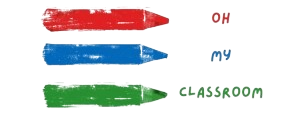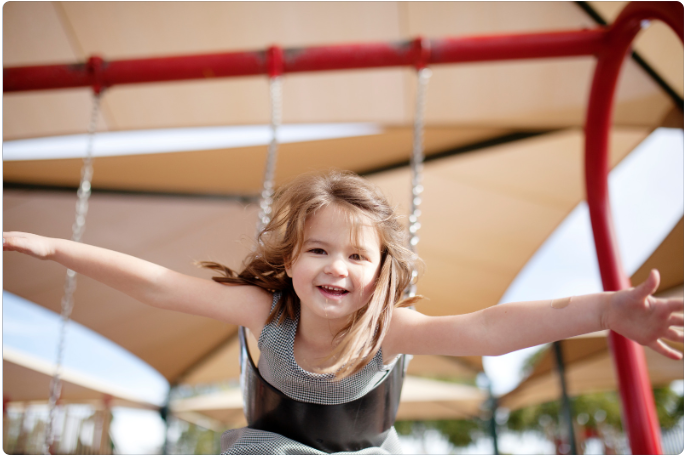Engaging in risky play can be a thrilling and transformative experience for children, allowing them to develop valuable skills and build resilience.
While the idea of encouraging risk-taking may sound counterintuitive to some, experts argue that it is an essential part of a child’s development.
Risky play involves activities that push the boundaries of safety, challenging children both mentally and physically.
So Let’s explore some examples.
Tree Climbing:

Climbing trees not only provides a sense of adventure but also helps improve balance, coordination, and strength. It allows kids to assess risks, make decisions, and develop problem-solving skills as they navigate their way through branches. While supervision is crucial, giving children the opportunity to climb trees under safe conditions can instill a sense of confidence and accomplishment, making them aware of their capabilities and limitations.
Rope Swinging:

Whether it’s on a sturdy tree branch or a designated play area, children can swing back and forth, testing their courage and coordination. Proper supervision and secure equipment are essential to ensure safety, but with the right precautions in place, rope swinging can be an exciting experience that builds resilience and fosters a sense of adventure.
Fort Building:
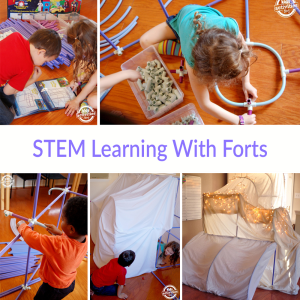
Allowing kids to construct their own forts using materials like branches, blankets, and ropes not only sparks their imagination but also involves a level of risk. Climbing, balancing, and maneuvering through different structures require physical strength and coordination.
Skateboarding:

Riding a skateboard requires balance, coordination, and perseverance. While it may seem daunting at first, children can gradually learn to maneuver the skateboard, practicing tricks and developing their agility. It’s important to provide protective gear such as helmets and knee pads and ensure children have a suitable and safe environment for skateboarding.
Water Play:
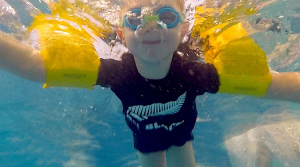
Water play offers a range of risky activities that can be both thrilling and educational. Swimming in open water, such as the ocean or a lake, challenges children to navigate currents and waves, enhancing their water safety skills. Jumping into water from a reasonable height, under proper supervision, and in designated areas, allows kids to experience a controlled level of risk while building courage and trust in their abilities.
Climbing Structures at the Playground:
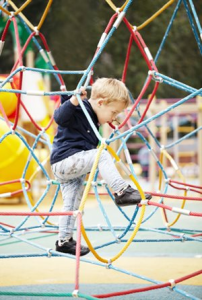
Playground structures, such as climbing frames, monkey bars, and jungle gyms, offer an exciting opportunity for kids to engage in risky play. These structures often involve heights, balancing acts, and navigating through various obstacles.
Scrambling on Rocks:
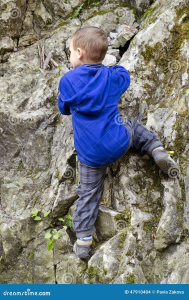
Scrambling on rocks provides a thrilling and adventurous experience for kids who enjoy exploring nature. It involves climbing, jumping, and navigating through rocky terrains, which requires physical strength, balance, and problem-solving skills. While safety precautions like appropriate footwear and adult supervision are essential, letting children scramble on rocks fosters a connection with the natural environment and encourages them to overcome obstacles and adapt to different terrains.
Slacklining:
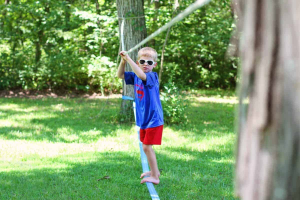
Slacklining is a challenging activity that involves walking or balancing on a suspended narrow band of webbing. It requires focus, core strength, and balance control. While initially wobbly and unstable, kids can gradually improve their skills and develop a sense of stability and confidence.
Bike Riding:
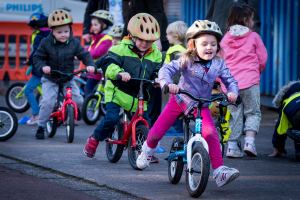
As children pedal, they navigate different terrains, learn to balance, and improve their coordination skills. Riding a bike on roads or trails requires an understanding of traffic rules and awareness of potential hazards. Providing kids with proper safety gear, such as helmets and knee pads, and teaching them the importance of road safety is essential.
Nature Exploration and Hiking:

They encounter uneven terrains, encounter potential hazards like steep slopes or slippery surfaces, and may encounter wildlife. Adult supervision and appropriate preparation are crucial to ensure safety, such as wearing appropriate footwear, carrying essential supplies, and following safety guidelines.
Rollerblading:

Rollerblading is a thrilling and fast-paced activity that challenges children’s balance, coordination, and agility. With the right protective gear, such as helmets, knee pads, and wrist guards, children can safely enjoy the excitement of gliding on wheels. It’s important to provide a suitable environment for rollerblading, such as a smooth and flat surface away from traffic.
Rope Course:
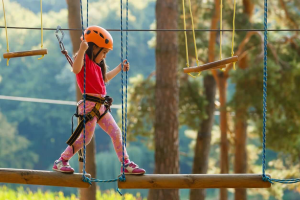
A rope course is an excellent way for children to engage in adventurous and risky play while developing various skills. These courses consist of suspended obstacles, including balance beams, rope swings, and zip lines.
Parkour:

Parkour is a dynamic and high-energy activity that involves moving through urban or natural environments using running, jumping, climbing, and other acrobatic movements. While parkour requires a certain level of physical fitness and skill, it can be adapted to suit children’s abilities and performed in designated areas or under professional supervision.
Slacklining over Water:

Taking slacklining to the next level, slacklining over water provides an exciting and challenging experience. Setting up a slackline over a shallow and calm body of water allows children to test their balance and coordination while providing a soft landing in case of a fall.
Rock Climbing:

Rock climbing is a more advanced risky play activity that can be enjoyed by older children or under professional guidance. Climbing natural or artificial rock walls requires strength, endurance, problem-solving skills, and focus.
Skate Park Tricks:
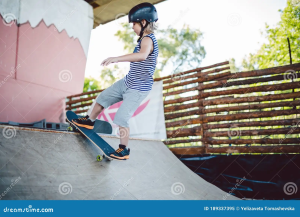
For kids who enjoy skateboarding, visiting a skate park opens up a world of risky play opportunities. Skate parks are designed with ramps, bowls, and rails that allow children to learn and perform tricks. It teaches them perseverance, resilience, and the importance of learning from failures.
Water Slides:

Sliding down twisting and turning slides provides a rush of excitement while testing their bravery and ability to navigate unpredictable twists and turns. Water parks typically have safety measures in place, such as lifeguards and height restrictions, ensuring a supervised and age-appropriate experience.
Roller Coasters:

These exhilarating amusement park rides feature high speeds, steep drops, and unexpected twists and turns. Riding roller coasters challenges kids to confront their fears and trust the safety measures put in place by professionals.
Outdoor Camping and Survival Skills:

Engaging in outdoor camping and survival skills offers a combination of adventure and risk. Children can learn skills such as building a fire, setting up tents, and navigating through the wilderness. Camping provides opportunities for kids to step out of their comfort zones, face challenges, and learn self-reliance.
